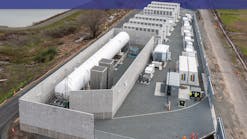The U.S. Energy Information Administration reported 35% growth in grid scale battery energy storage installations between 2019 and 2020 with power capacity totaling 1,650 MW by year-end. The market took off from there, boasting a seemingly unbeatable growth spurt of 3,500 MW of grid scale storage in 2021. Activity has been more sporadic this year, but some believe we are on the brink of a very robust countrywide energy storage rush if all the stars align.
Obviously, a significant boost is expected from the billions of dollars Congress has appropriated under the Energy Act of 2020, the Infrastructure Investment and Jobs Act, and the Inflation Reduction Act. Each of these laws have provisions for advancing existing and new energy storage technologies directly or for improving grid reliability and resiliency with an emphasis on renewable energy, which will indirectly promote storage. Further, of immense importance is the first ever allowance of federal investment tax credits for standalone storage projects as well as the very favorable renewal of tax credits for wind and solar projects.
The preponderance of favorable laws and prospective funding should, in-time, help address the headwinds analysts have sited to storage expansion this year. For example, Wood Mackenzie recently sited continued supply chain problems, transportation delays and interconnection queue issues as principal factors behind the delay or cancellation of nearly 1.1 GW of projects in the second quarter. Despite this fact, some areas saw substantial growth, including Texas, which is now rivaling California in terms of storage capacity additions.
Insights into the outcomes achieved from battery storage growth in Texas are revealed in a detailed study of the 2021 merchant battery storage market performed by Gridmatic, a firm providing scheduling and dispatch optimization services for grid-scale storage assets. They found greater than 96% of the revenue generated by storage systems in this market were derived by providing ancillary services. Excluding ERCOT’s scarcity price adder and the significant impact on revenue caused by Winter Storm Uri, 2021 demonstrated the average 1 hour battery system can realize a return of Capex in 2.25 years. However, 27%–54% of revenue occurred in the top 10% of days, meaning that high battery system availability and superior performance are important for profitability. Of note, Gridmatic also found that even the best performing projects achieved only 54% of the storage revenue those facilities could earn with perfect foresight of electricity prices.
Due to the prospect of significant new federal investment dollars or simply the success of storage to-date in regions such as ERCOT, the storage market is the focus of considerable new attention. For example, big financial players are teaming up to improve their capabilities. Consider Goldman Sachs Asset Management and Cleanhill Partners’ acquisition of a majority stake in smart inverter supplier EPC Power. Also, following years of delay, MISO has finally authorized storage resources to participate in the authority’s energy and operating reserve markets.
Already a strong advocate for storage, California recently announced an additional measure to facilitate the rapid expansion of battery resources. A new law, Assembly Bill 2625, exempts energy storage projects from local zoning and the process wherein officials conducted hearings, executed approval authority, and set conditions for new development. On cue, a Tesla Megapack battery caught fire at the Elkhorn Battery Storage facility south of Santa Cruz, California. The incident led to the disconnection of the storage facility from the grid, the closure of a local highway, and a shelter-in-place notice for residents. This was neither the first lithium battery storage site fire for the host utility nor for Tesla Megapacks. The incident may be a message that careful siting reviews for battery storage facilities should not be sacrificed in our effort to accelerate development.
Technology improvements and price declines in large scale battery systems triggered a series of events that will forever change the power industry, beginning with FERC’s 2018 Order 841 directing grid operators to remove barriers to market participation for storage resources. Based on one estimate voiced at a recent Senate Energy and Natural Resources Committee hearing, there are 421 GW of energy storage projects in or about to enter an interconnection queue somewhere in the U.S.
The challenge ahead is to make optimal use of the new rules and funding favorable to grid scale storage while expeditiously addressing the development and safety issues which could stymie further sector growth and success. Streamlining the interconnection process, improving the supply chain, mitigating fire/safety risks associated with certain storage technologies, further diversification to prevent over-reliance on lithium-ion technology, and improving storage duration are among the important issues. Finally, an informed market deployment strategy also will be key for broad storage success since historical examples demonstrate power industry players have caused oversaturation of products such as ancillary services and co-generation in some markets.


